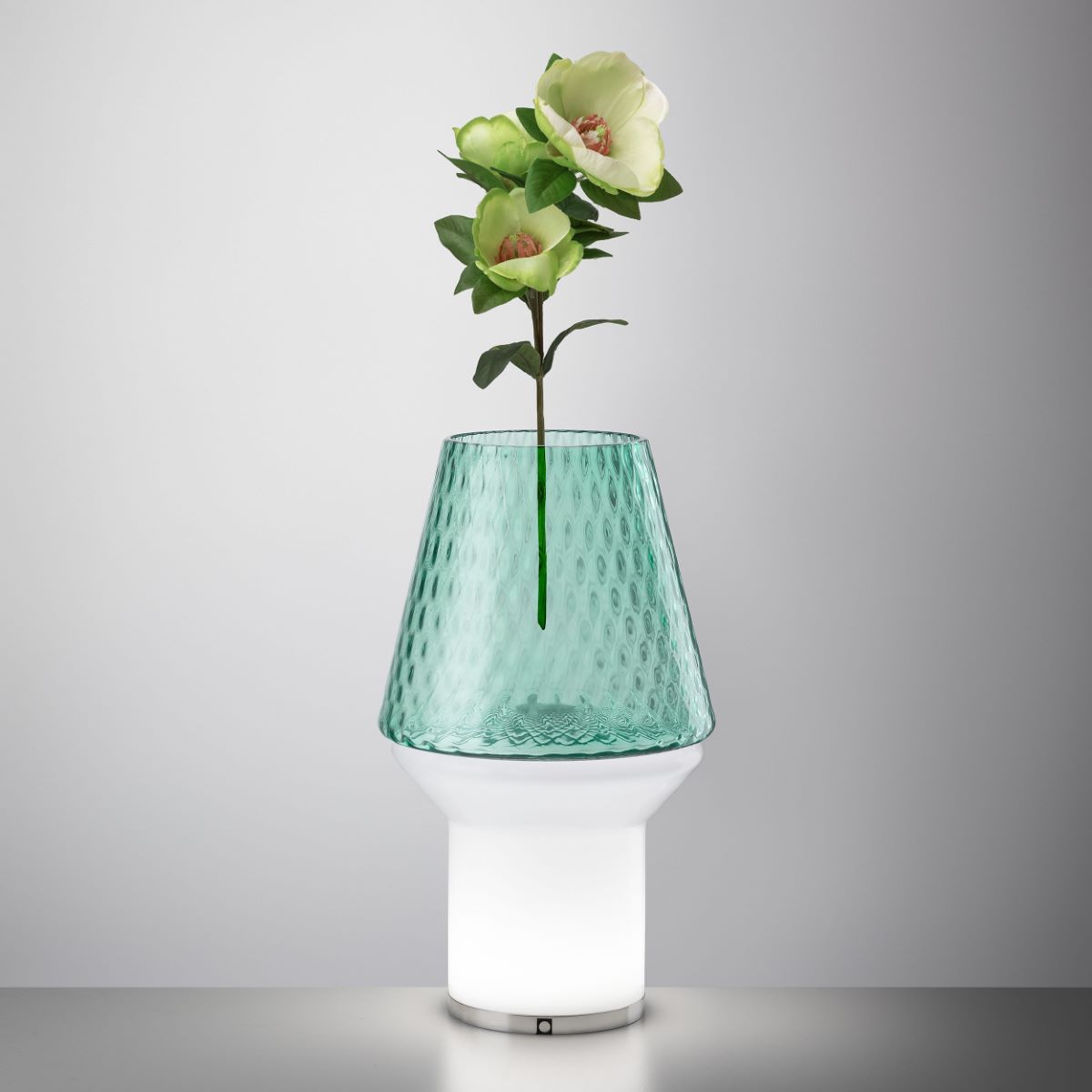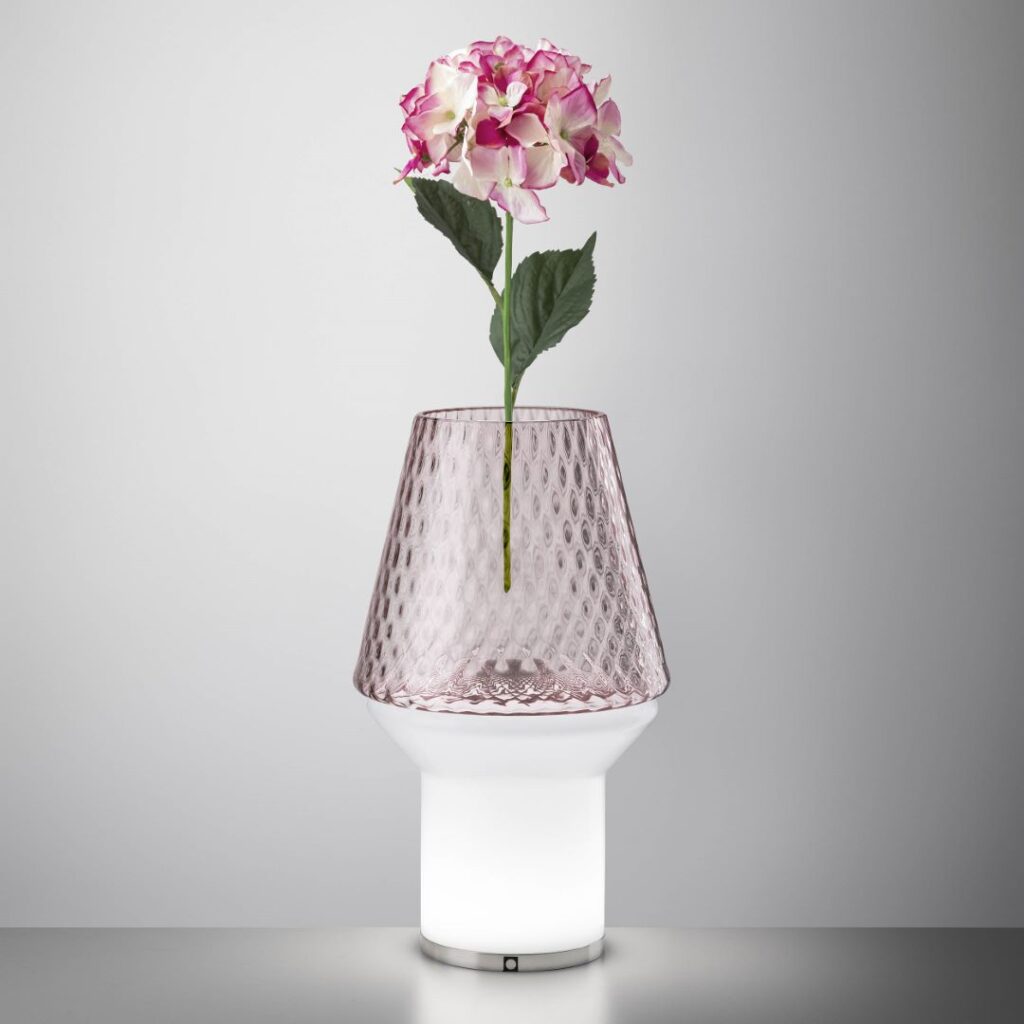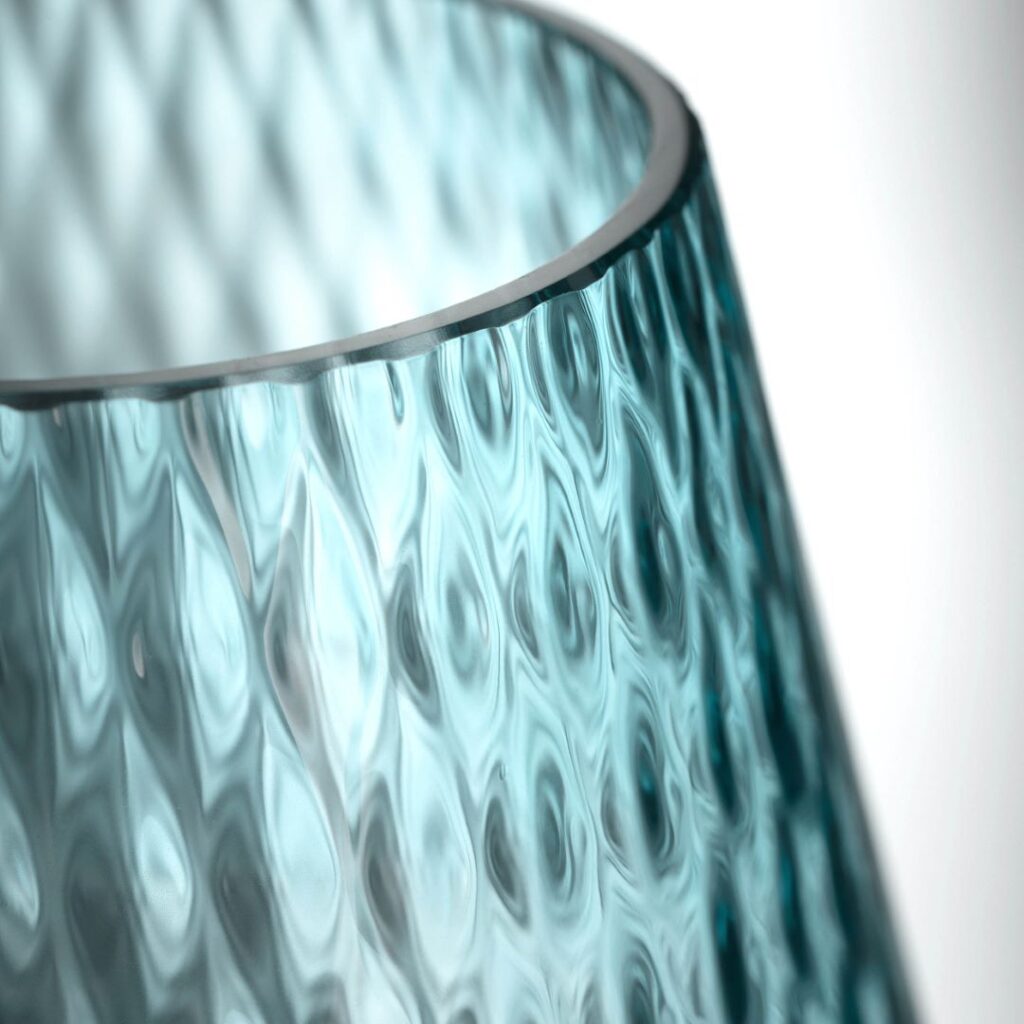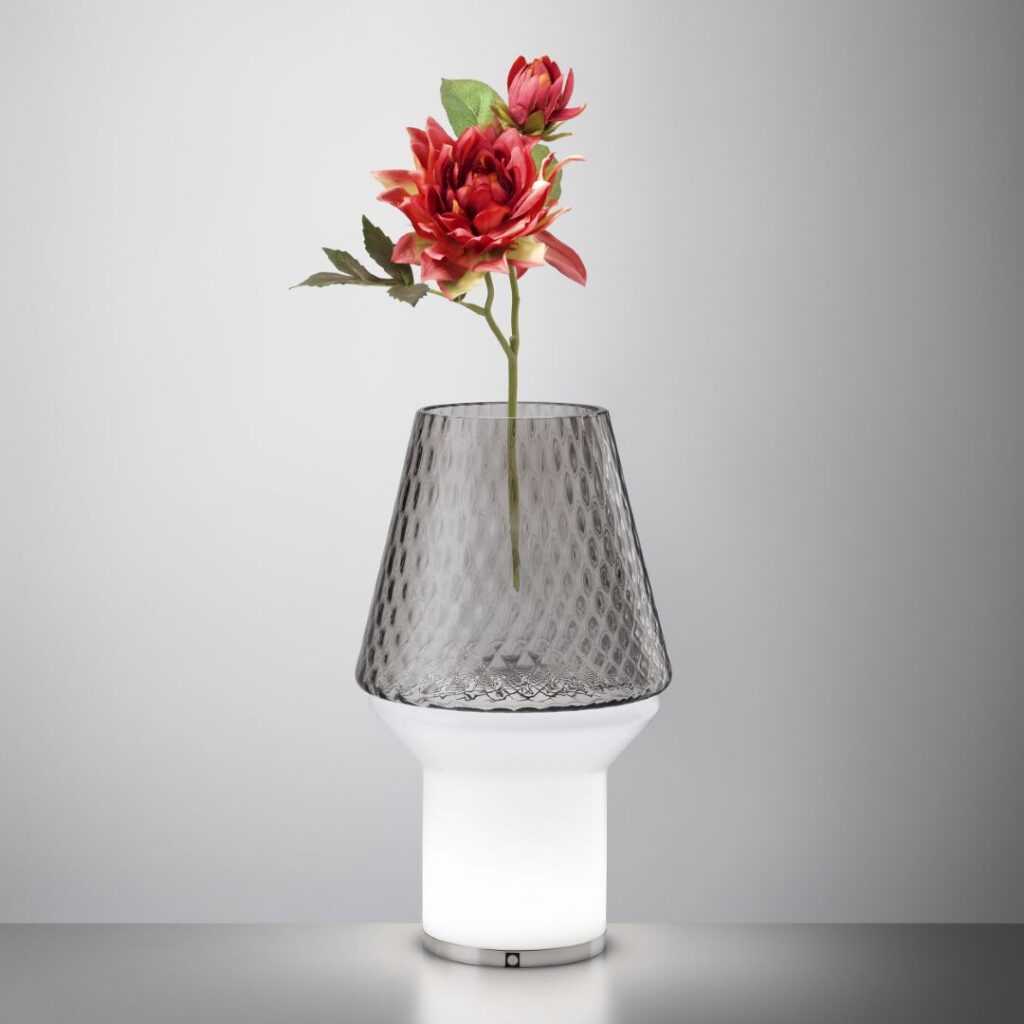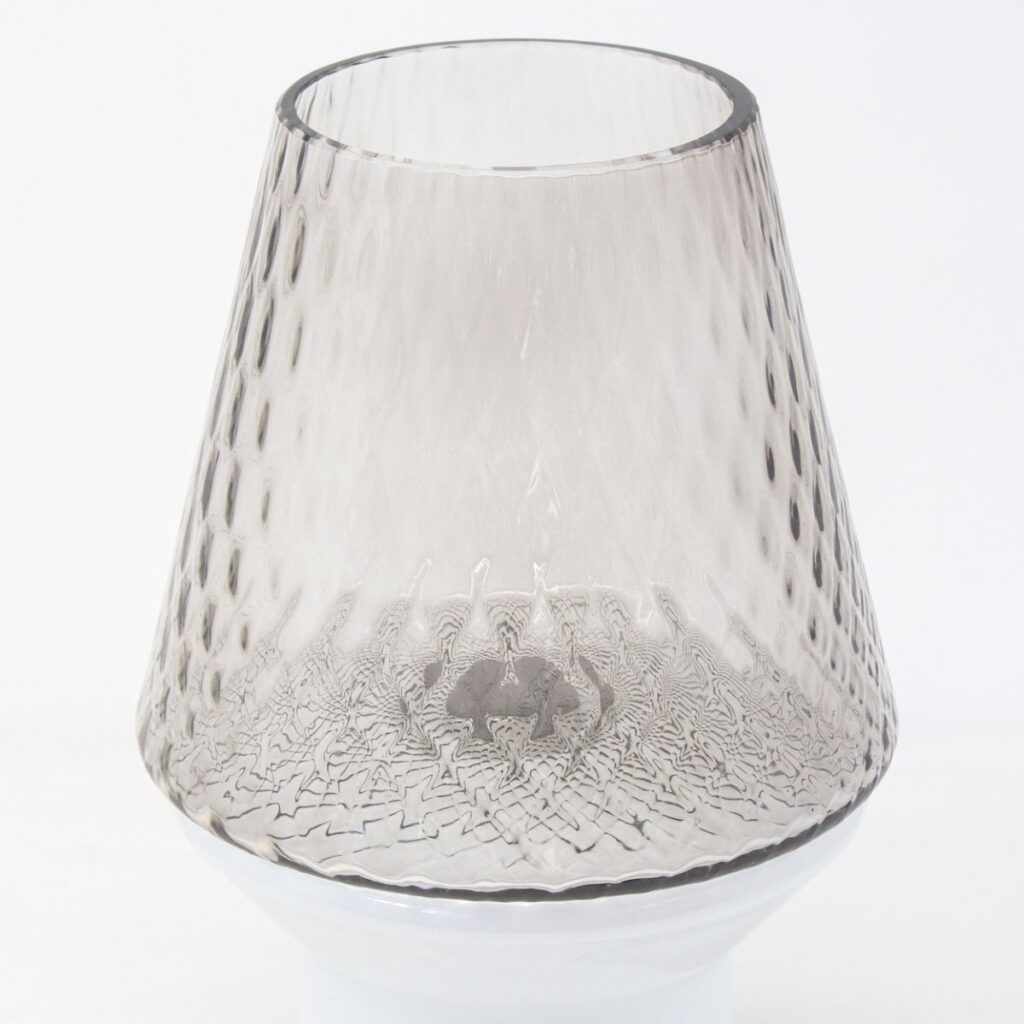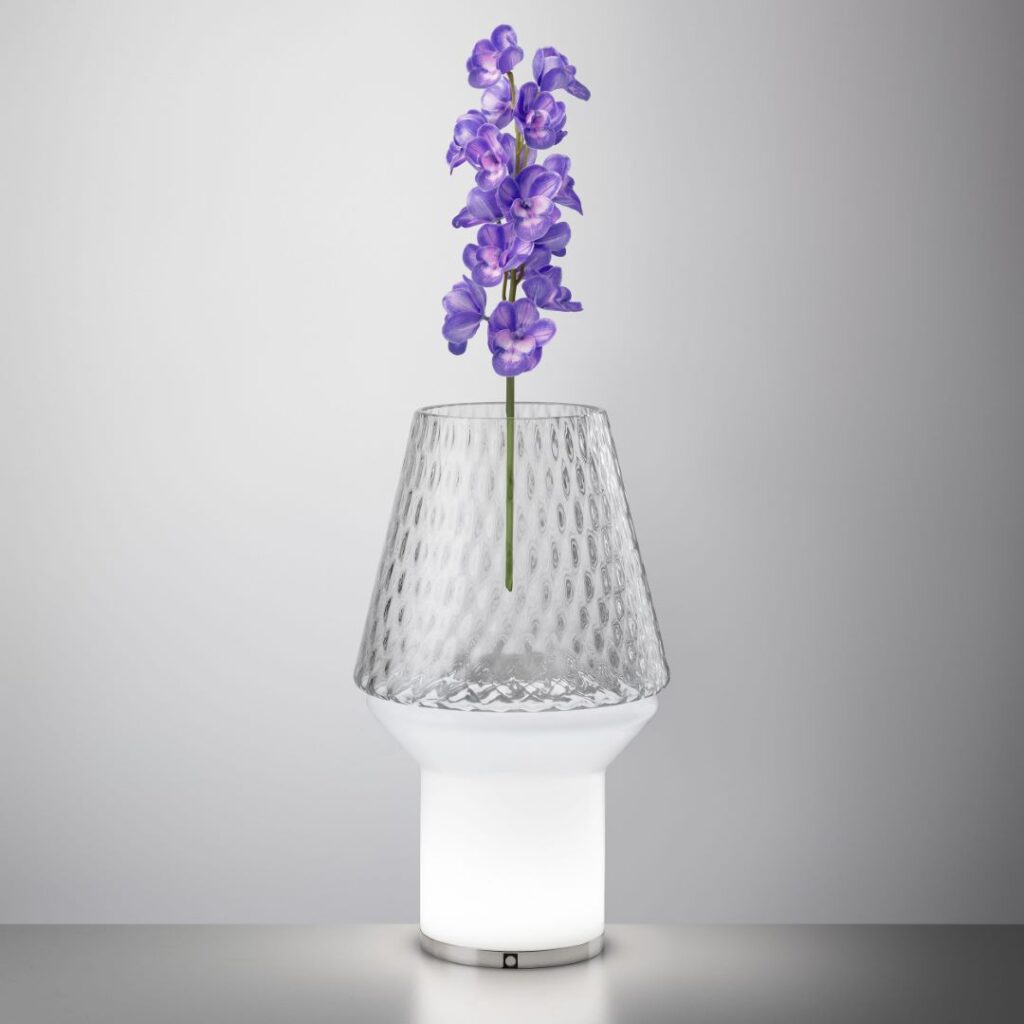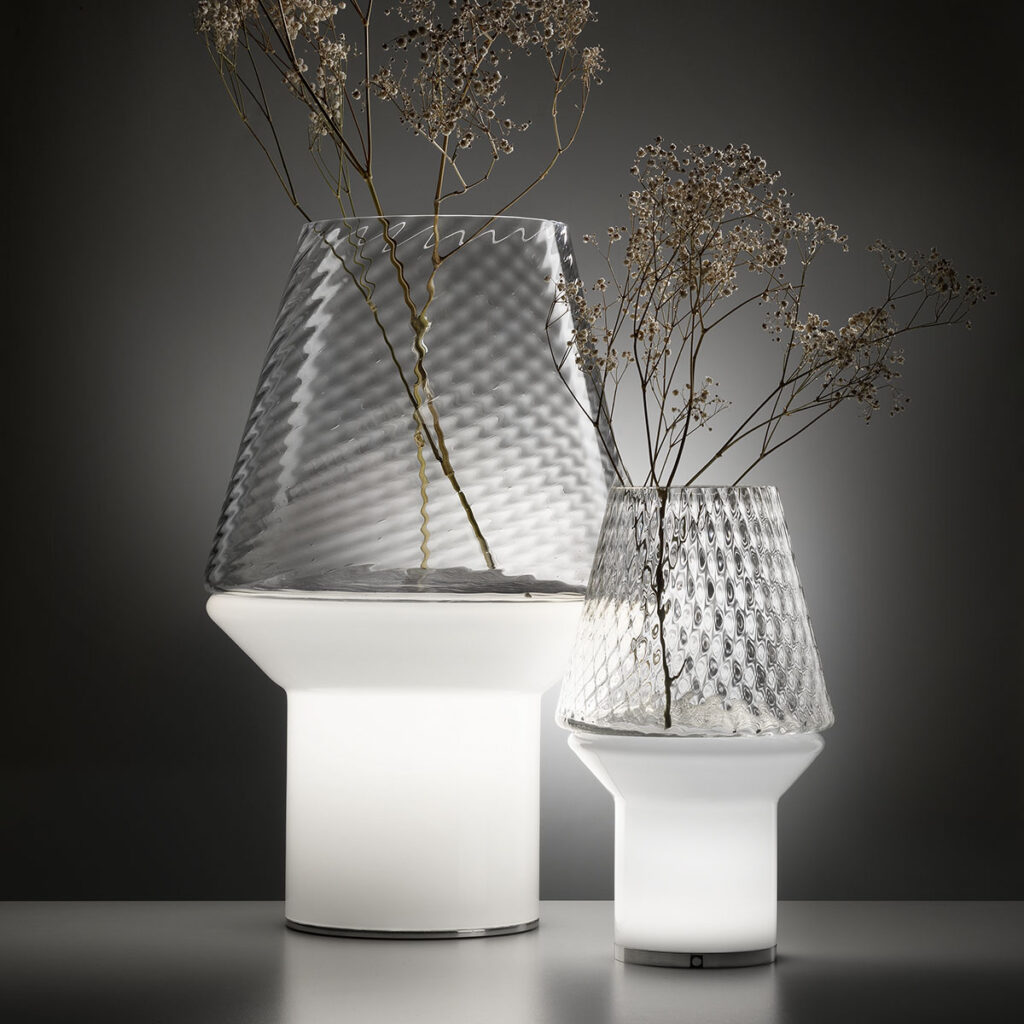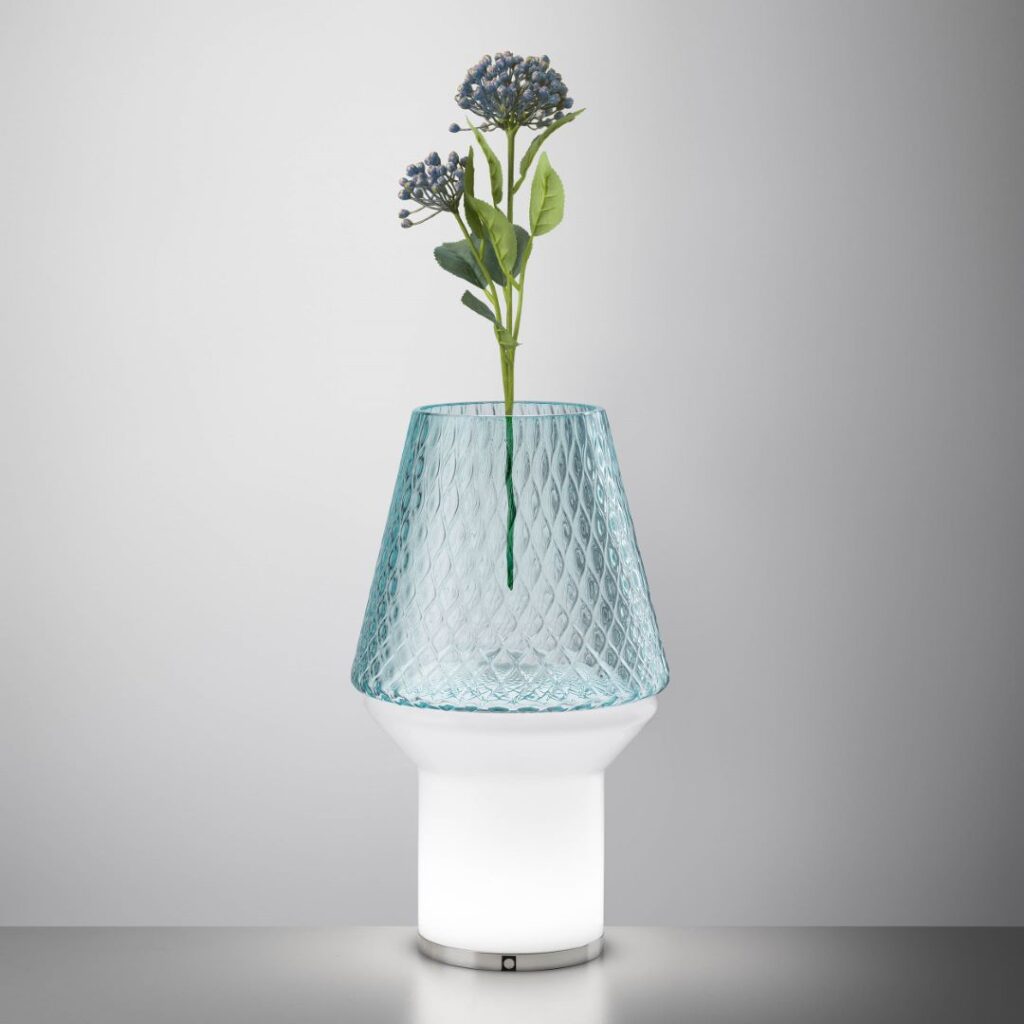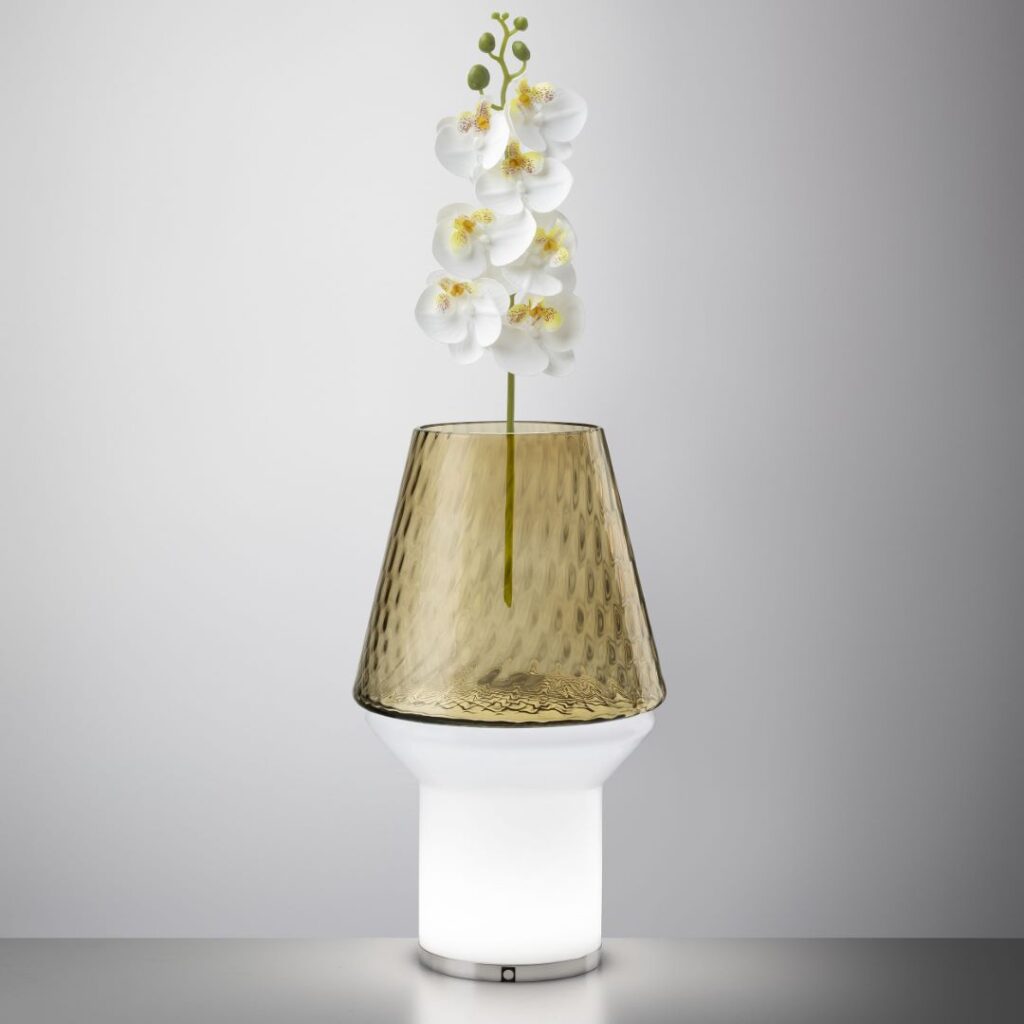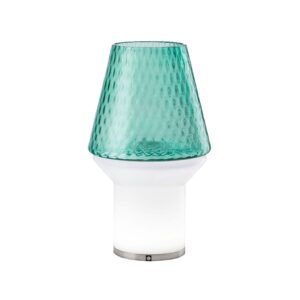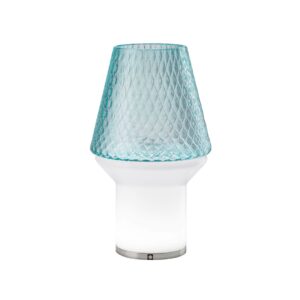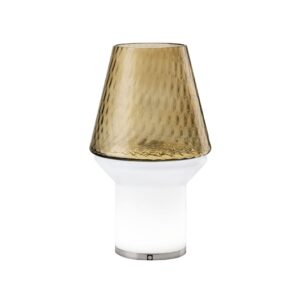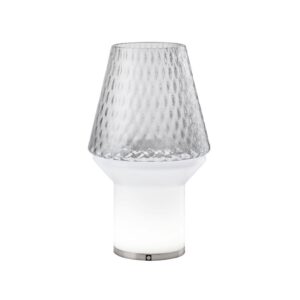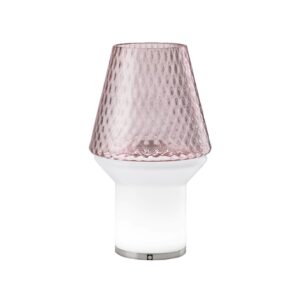Mini Forest
TABLE LAMP IN MURANO GLASS
A vase illuminated by the glass below, a table lamp, a stylised tree.
The traditional truncated cone-shaped lampshade, reminiscent of the foliage of the plant, does not appear as an exposed light bulb as is usually the case, but is illuminated by the diffuse light of the white glass underneath: the objects placed in the lampshade – simple dried flowers, river pebbles or scented candles – have a spectacular effect.
Romani-Saccani experiments with new combinations between two lamp bodies, creating a sculptural object that illuminates itself when needed to reveal its full artistic potential.
The Forest Mini lampshade is the portable, battery-operated and rechargeable version.
A STYLISED TREE, A VASE LIT BY THE GLASS UNDERNEATH IN WHICH TO STORE OBJECTS, A TABLE LAMP.
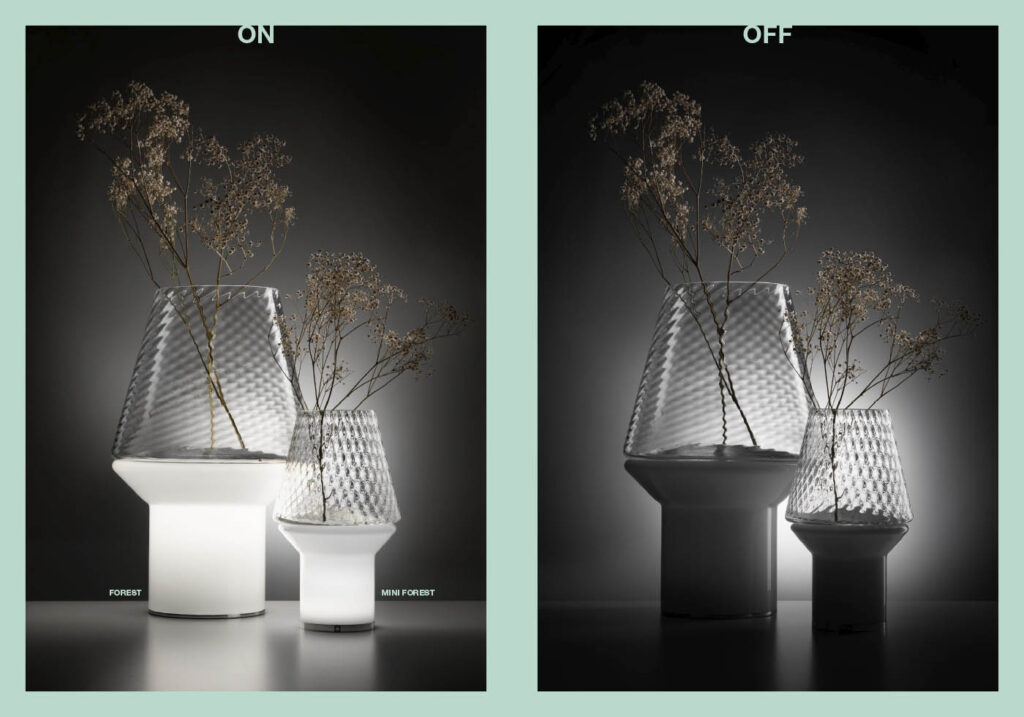
Models from the collection
All our chandeliers are available in different variations and fully customizable.
Customizable and tailor-made
Available colours
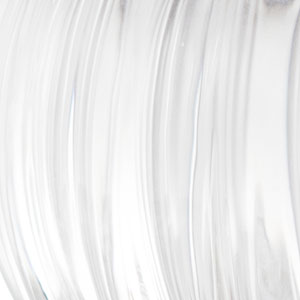 C - crystal
C - crystal 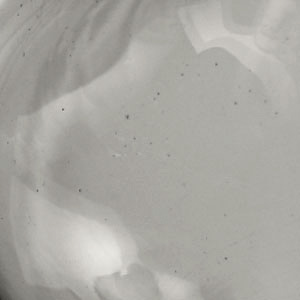 D - smoke
D - smoke 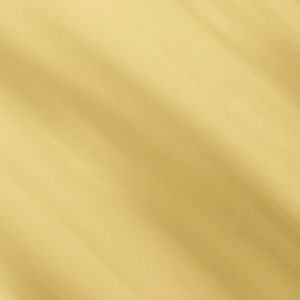 F - straw
F - straw 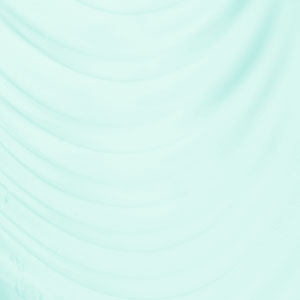 G4 - aquamarine
G4 - aquamarine  Q0 - celeste
Q0 - celeste 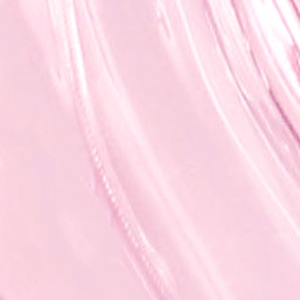 R - rose
R - rose Available finishes
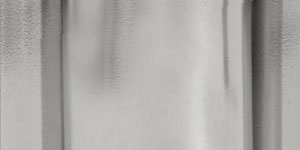 N - polished nickel
N - polished nickel 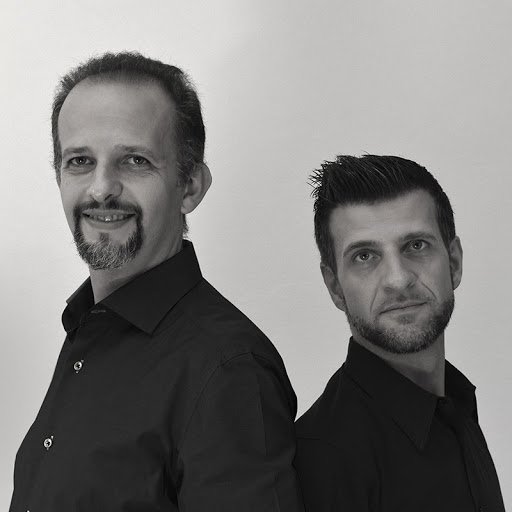
The Romani Saccani Architetti Associati design studio was founded in 1999 by the professional collaboration between architects Michele Romani and Mauro Saccani.
Each of their new concepts springs from a conscious reinterpretation of the memory of the past and becomes an act of synthesis between fantasy and concreteness, a challenge to the gravity of homologations and customs.
The more ‘simple’ the generating idea, the more successful the project will be: hence ‘simple’, which never means banal, understood as the first form of elegance and rejection of excess and vulgarity, as the essential and pure capacity to communicate the authentic meaning of things.
Interview
INTO THE IDEAS OF DESIGNERS: AN INSIGHT
How did you think about this product in the first place?
Working on the theme of the table lamp, starting from the vast production of “mushroom” lamps from the 1970s and then reinterpreting them with a more contemporary taste, experimenting with new combinations of lampshade and base, trying to arrive at a sculptural object capable, when necessary, of lighting up to reveal all its artistic potential. One of the characteristics lies in the fact that the traditional truncated cone lampshade does not have the usual visible bulb in the centre, but is illuminated by the light diffused by the white glass underneath. In this way, the lampshade can also be seen as a large storage vase.
What does the product name mean?
This collection of table lamps has a profile vaguely reminiscent of a stylised tree. The silhouette of the glass at the base recalls that of the cylindrical trunk that opens like a funnel towards the foliage above. The truncated conical shade resting on top ideally represents the ‘crown’ of the plant. By acting with cuts on increasing levels, it was possible to decline the lamp according to slightly different heights that modify the profile of the tree making it more or less slender, hence the idea of naming it with the term FOREST.
How far does the result deviate from the theoretical project and how interesting was the production process?
The overall form, in its essentiality, faithfully reproduces all the characteristics underlying the initial sketches. The final result does not reveal all the attempts and efforts invested in the definition of the lampshade, which through an infinity of samples and tests now presents itself with three handcrafted textures that enrich the volume with ever-changing reflections and reverberations, just like the mass of leaves moved by the wind.
One of the technical difficulties faced in the development of the product was that of making the curvatures of the two glass panes overlapping in coupling, without the central point of coupling being legible.
Technology and Materials Used?
The lamp is composed of 2 handcrafted blown glass panes, one in white opaline with the function of diffuser and load-bearing base, the other superimposed on the previous one, made with the reed technique in different colour combinations.
If you could place your product anywhere in the world,what would be the perfect place?
As a free-standing lamp, which does not require any special arrangements, this design is easy to fit into any environment, and the current introduction of the small portable version, equipped with a rechargeable battery, makes this model even more versatile. The only difficulty lies in the embarrassment of colour choices for the lampshade, which comes in a wide range of pastel colours as well as a transparent crystal version.
What is light to you and how do you like to handle it in your projects?
For us, working with light has always been an incredible opportunity to give a special mark and value to the environment in which it is placed. Without light there is no vision, without light there is no emotion. Associating light with a material, a colour, a luminous effect means precisely manipulating it to create something pleasant that makes us feel good and that we can ‘switch on’ whenever we need it.
